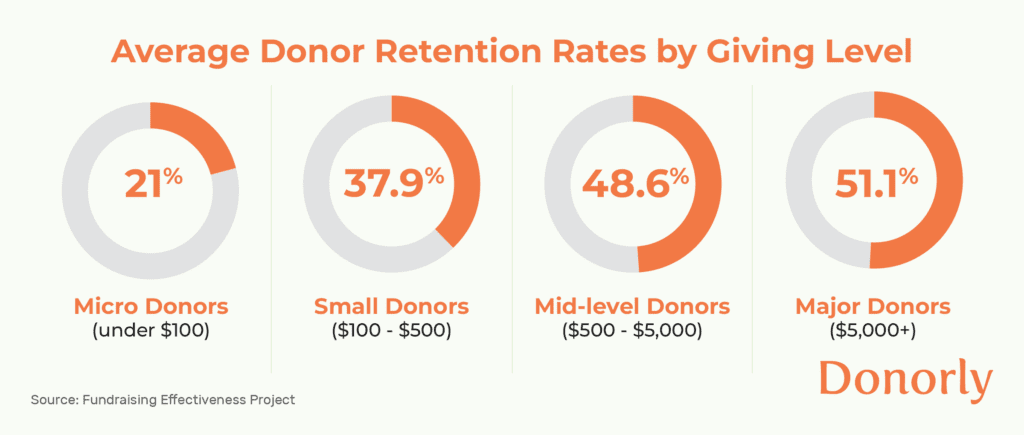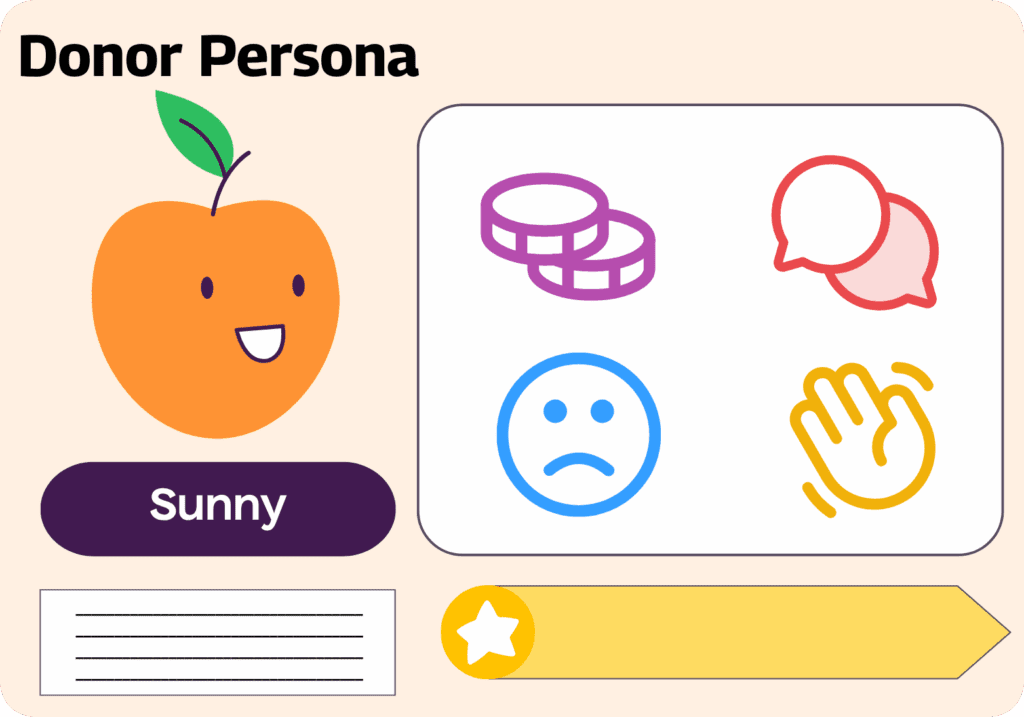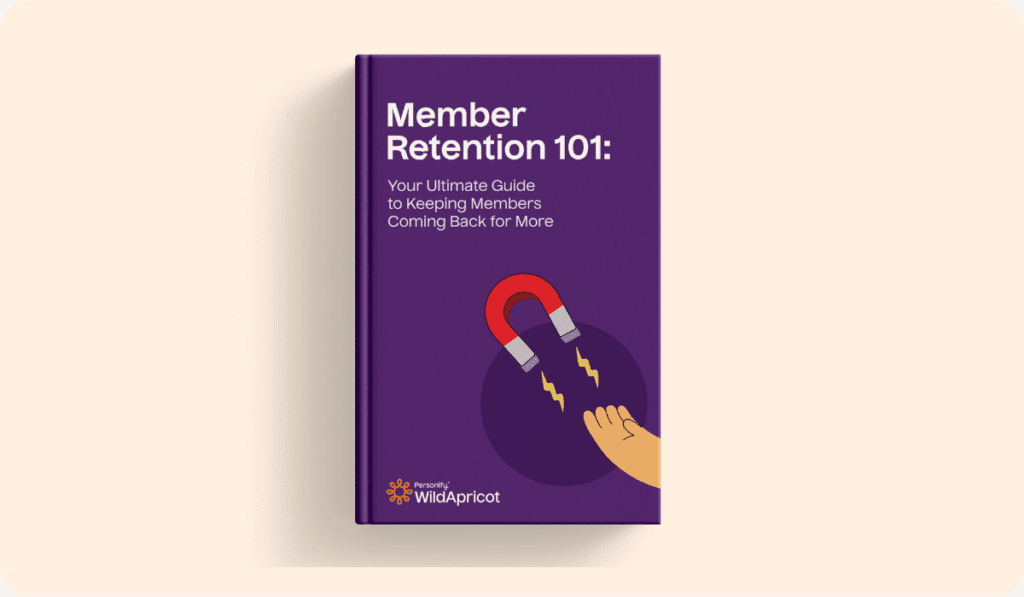You know how crucial it is for your nonprofit to develop strong, lasting relationships with engaged donors, but how do you really know where you stand? More importantly, how do you build and maintain relationships that are healthy enough to withstand challenges like economic uncertainty or a global pandemic?
We know that gauging the security of your relationships and keeping donors invested in your cause long-term can be a challenge for any organization. That’s why we’ve compiled this guide to healthy donor relationships, including a quiz you can take to find out how well you’re currently doing.
Read on to learn about the elements of a healthy donor relationship and how to start nurturing a loyal community of donors for your nonprofit.
It’s All About Perspective—How Do You View Your Donors?
First, let’s talk about your perspective on donor relationships. The way you view and approach your nonprofit’s relationships can make all the difference in their success, especially when it comes to major donors.
Some nonprofits view their donors as key players in their missions, while others may just think of them as funders.
Reflect on how you perceive your donor relationships and shift your perspective if needed. Remember that the focus of these relationships should be on people and their unique charitable interests and motivations—not just the funding that they provide.
The 4 Elements of a Healthy Donor Relationship
What makes a donor relationship healthy? The answer isn’t too different than it is for a typical relationship between two people. After all, donors want to get to know the people behind your nonprofit’s cause just as much as you want to learn about them.
While every relationship is different, we’ve broken it down into four essential elements that every nonprofit-donor relationship should have:
1. Trust
We can’t understate the importance of trust between your organization and your donors. Supporters must trust that your nonprofit will put their dollars to good use before they commit to donating, especially if they plan to give a large donation.
That’s why one of the main goals of the cultivation stage in a donor relationship should be to build genuine trust in your nonprofit. Prove to donors that your organization is honest about its goals, transparent with its funding and committed to helping its community in meaningful ways.
The best way to cultivate trust with donors is to increase your organization’s transparency. Publish detailed annual reports that explain how you used your funding each year, and make them publicly available on your website. In conversations at events or one-on-one meetings, be honest about your organization’s greatest needs, challenges and opportunities, and readily answer any questions donors have.
2. Communication
Frequent, two-way communication is a pillar of any healthy relationship. In the context of nonprofits and donors, this means sending plenty of messages and content like:
- Announcements about new campaigns
- Updates on the progress and impact of your work
- Major milestones your nonprofit hits
- Invitations to get more involved
- Stories about your beneficiaries, staff and volunteers
- Requests for donor feedback and input
Make your organization available across multiple channels so donors can stay in contact with you in the ways they prefer. This might include email, direct mail, social media, text messages and an easy contact form on your website.
3. Recognition
Donors need to feel acknowledged and appreciated for all they give to your cause in order to feel motivated to continue donating. A healthy donor relationship includes regular thank-you messages and personalized impact updates that remind donors how much they matter to your organization.
NXUnite recommends getting creative with your recognition strategy and trying out ideas like donor thank-you videos, eCards and appreciation events along with classic methods like phone calls and donor recognition walls. This way, your appreciation will remain genuine while providing some excitement for longtime donors.
4. Community
Your donors should feel like they’re not in this alone—they’re part of a large, caring community of supporters who come together to make a positive difference in the lives of others.
You can build community with donors by inviting them to deepen their involvement and see your work up close. Offer donors at all giving levels the opportunity to:
- Volunteer
- Engage in advocacy
- Attend a variety of events
- Interact directly with beneficiaries, if possible
Through these invitations, you can show donors that your mission is a communal effort and that each donor plays a vital part in making it a reality.
Quiz: How Healthy Are Your Donor Relationships?
Now that you understand what goes into a healthy partnership with donors, let’s explore the state of your current donor relationships. Take our quiz by answering the following questions:
1. Are you keeping lines of communication open?
How often do you communicate with donors? Do you use multiple channels? If you already send emails and newsletters regularly, are you providing opportunities for donors to respond?
Offer several ways for donors to get in touch with your organization so they feel welcome to reach out. Include your social media handles in every communication, encourage responses via text or phone call and reach out to major donors regularly. Give them the opportunity to provide feedback or ask questions at any time.
2. Are you listening to donors’ feedback?
Do you ask for donors’ opinions regularly, and do you pay attention to what they tell you? Do you let donors know when you implement their feedback?
Consider every donor’s feedback seriously to show them that you value their opinions. In particular, listen for any concerns they might have about how you’re putting their gift to use or for hints about new areas of your mission that they may be interested in.
3. Are you showing your appreciation?
How often do you say thank you to donors? Do you recognize donors both publicly and privately? Do you honor their personal preferences when you do so?
Show donors how much they mean to your nonprofit by creating touchpoints outside of their formal stewardship cycle. Send a quick text message updating them on the program they support, for example, or make a phone call to say thanks for a recent online gift. Sharing impactful stories or poignant videos is also a great way to help them feel more connected to your cause.
4. Are you discussing the future of your organization with donors?
Are you giving donors enough information about your nonprofit’s goals and plans? Do you share regular project updates and data about your work? Do you give major donors extra insight into the vision for your organization’s future?
Keeping donors in the loop about what’s going on at your organization—particularly when it comes to your upcoming programs and initiatives—sends the message that you consider them to be a valuable part of your team. Plus, it helps you prove that you’re committed to being transparent about what’s going on at your organization now and in the future.
5. Do you interact with donors often?
Are you inviting donors to special events or open houses to show them firsthand how their support makes a difference? Do you provide opportunities for donors to interact with each other?
Remember that donors want to engage with your organization in several different ways. Give them the option to volunteer, attend events or serve as a peer fundraiser, then record their involvement preferences in your database when you discover them.
6. Are your donor retention rates at or above average?
What do your most recent donor retention rates look like? Do you monitor the retention rates of donors at different giving levels? Are you investigating any dips in retention that you see?
According to Donorly, the current average donor retention rate ranges from 21% for micro donors to 51.1% for major donors who give over $5,000. Compare your nonprofit’s retention rates to the averages shown below to see where you stand. If any of your retention rates are particularly low or jump dramatically from one year to the next, dig deeper into your data to find out why.

Alt text: Average donor retention rate by giving level, discussed in the text above
Read more: 4 Steps to Writing the Perfect Lapsed Donor Letter + Template
Quiz Results
If you answered yes to all of the above questions, then congratulations—your donor relationships are likely healthy!
However, remember that relationships are constantly changing and evolving, so your work isn’t done yet. You still need to maintain these relationships over time and find ways to make them even stronger.
If you answered no to one or more of these questions, don’t worry. Just by reading this article and deciding to put in the work, you’re already on the right track to building healthier relationships with donors. We’ll cover a few tips you can use in the next section.
Tips for Maintaining Strong Donor Relationships
Whether you want to maintain the relationships you have or develop new healthy relationships with donors, these tips can help you do so:
- Create a balanced stewardship strategy. While you should thank donors for every contribution and keep them updated on your work, you don’t want to overwhelm them with too many messages. Balance your approach by developing stewardship plans that are appropriate for each donor’s giving level and communication preferences.
- Appeal to donors’ emotions. Emotion is a powerful motivator, so aim to stir up positive emotions with your communications. Feature the true stories of beneficiaries, patients or other recipients of donor support to deepen their connection to your mission. Leave them with inspirational, empowering messages that tug at their heartstrings in all the right ways.
- Be honest. Don’t be afraid to let your donors know when things aren’t going exactly to plan. Being open and transparent about how progress is tracking against your goals when it comes to program delivery or the launch of that new initiative will let your donors know you’re on this journey together—through all the highs and lows.
If you need help implementing any of these strategies or you want an expert’s opinion on your nonprofit’s current approach to donor retention, consider reaching out to a professional fundraising consultant. They can take a holistic look at your strategy and help you develop a data-informed plan to strengthen your relationships and raise more funds.
Maintaining relationships takes commitment and plenty of open, honest communication, but it’s well worth the effort. When you have a donor base full of passionate, invested supporters, your nonprofit can make more of an impact on your mission and more easily inspire others to join your ranks.









